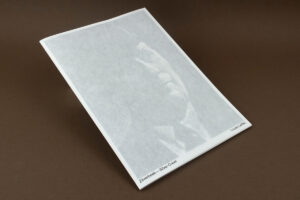YOUR CART
- No products in the cart.
Subtotal:
€ 0

SOLD OUT
Photography:
Lucas Leffler
Narrative construction:
Lucas Leffler
Carel Fransen
Translations and text editing:
Joy Phillips (The Language Collective)
Design:
Carel Fransen
Lithography:
T’ink Studio
Production:
Jos Morree (Fine Books)
Print:
Wilco Art Books (NL)
Binding:
Patist (NL)
Supported by:
Fédération Wallonie-Bruxelles
Since the 1920s the Belgian factory Gevaert accidentally disposed tons of silver as a by-product of the production of photographic film. This outflow ended up in the Grensbeek (Border Creek) that separated the municipalities of Berchem and Mortsel. For its sludge coloured black by the silver, the creek was popularly called Zwarte gracht (Black Ditch) or Zilverbeek (Silver Creek).
The myth starts in 1927 when a tool maker working at the factory realised the kind of fortune the factory was washing away on a daily basis. The man invented a system to recover the silver from the sludge in the creek. He secretly drained the stream, and transported the dried sludge to a local metallurgical plant where the silver was extracted. The man recovered up to half a ton of silver a year, more than enough for a generous salary.
This story fascinated Lucas Leffler (BE), who took the position of a researcher. He found archives, newspaper clippings and historical documents, and photographed the factory and the creek. But he also took sludge from the bottom of the Zilverbeek, trying to find traces of silver, just like the pioneer before him. He finally used the sludge to make “mud prints” by means of a photographic darkroom printing technique, of which a reproduction has been added as a poster in this publication.
Lucas Leffler is living and working in Brussels. He studied photography at the Haute École Libre in Brussels and completed the master programme at the Royal Academy of Fine Arts in Ghent. His work is based on his fascination for science and history, and besides photography often develops into a variation of different expressions such as sculptures and installations. His work has been exhibited at Contretype in Brussels and Galerie Satellite in Liège. The dummy of Zilverbeek won the Dummy Award at Liège Photobook Festival and was shortlisted for the Unseen Dummy Award.